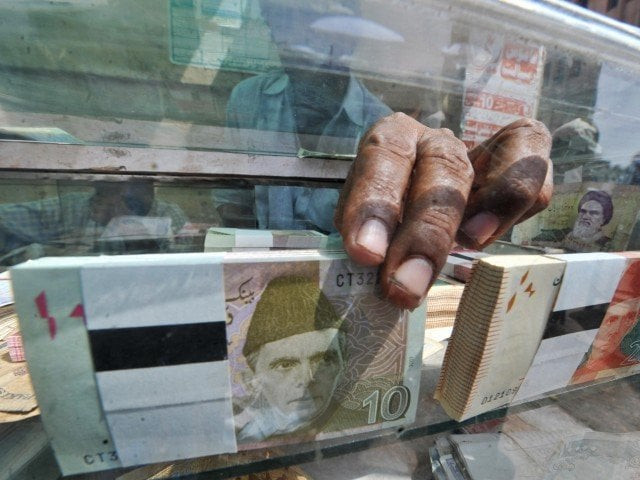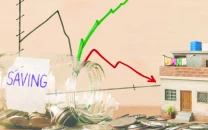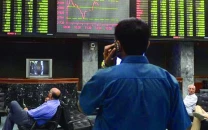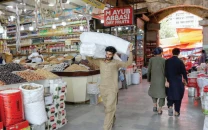Rupee slumps amid political crisis
Currency melts around 3% to Rs298.93 vs dollar; market expects swift recovery

Amid escalating political temperature and law and order disturbances in the country, the rupee felt the heat and melted almost 3% to a new record low at Rs298.93 against the US dollar in the inter-bank market on Thursday.
Market talk, however, suggested that the currency made a notable correction on futures counter at the end of the day and may make a significant recovery on ready counter on Friday. It was supported by the expected easing of political tensions after the Supreme Court ordered the release of ex-prime minister Imran Khan from the custody of law enforcement agencies.
The currency also got support from the IMF which said it had remained engaged with Pakistan to resume its $6.7 billion loan programme.
According to State Bank of Pakistan’s (SBP) data, the currency nosedived 2.91%, or Rs8.71, to a new all-time low at Rs298.93 against the greenback.
Cumulatively, in the past two days, it slumped 4.71%, or Rs14.09.
The rupee’s free fall is feared to accelerate the pace of inflation as imports have become further expensive. Talking to The Express Tribune, Alpha Beta Core CEO Khurram Schehzad commented that the rupee remained volatile and maintained its record-breaking streak for the second consecutive day in the wake of heightened political uncertainty.
Prior to the current political turmoil after Khan’s arrest, he recalled, the US dollar demand and supply was smooth in the inter-bank market, when the rupee stood stable around Rs283-284/$ for a long time.
He acknowledged that the currency made a smart recovery to around Rs292-293 vs dollar towards the end of the day.
Schehzad believed that it was almost impossible to project the rupee-dollar exchange rate amid depletion of foreign exchange reserves to the critically low level of around $4 billion and the risk of debt default.
He anticipated that “the rupee will remain volatile … until the IMF programme is resumed.”
Exchange Companies Association of Pakistan President Malik Bostan said the rupee recovered to Rs291/$ towards the end of the day as exporters stepped in to sell their proceeds withheld over the past three days. He projected that the exchange rate would move in a band of Rs285-295/$ and would not cross Rs300/$ under the current situation.
Bostan expected the IMF to resume its loan progrmme after Finance Minister Ishaq Dar once again approached the US asking it to push the lender to resume the programme.
“The currency will recover Rs20-25 immediately after Pakistan clinches a staff-level agreement with the IMF,” he said and anticipated that the rupee would partially recoup losses over the next couple of days on expectations of easing political tensions.
Schehzad asked the government to gradually open imports, instead of continuing its trade control, despite a fall in foreign exchange reserves. “Import of raw material is a must to reopen the partially shut economy. Market-based exchange rate will create balance in the rupee-dollar parity and help restore economic activities.”
Besides, he emphasised, the government should cut its non-development expenditure and the size of cabinet to support the currency. “It should increase the number of taxpayers instead of imposing new taxes on the already taxed corporate sector.”
He was of the view that the State Bank should avoid further hike in its policy rate because the increase in cost of financing would only suppress the economy and would not rein in inflation.
Apart from that, the government and the central bank should relax administrative controls over the economy. The return of business confidence will surely provide support to the rupee.
Meanwhile, gold price fell by Rs2,700 to Rs237,300 per tola (11.66 grams) on Thursday, which came in contrast with the massive rupee depreciation and rise in global bullion market.
According to market players, the price came off Wednesday’s record high after consumer demand dropped.
In the international arena, gold went up by $7 to $2,038 per ounce (31.10 grams), the local pricing body reported.


















COMMENTS
Comments are moderated and generally will be posted if they are on-topic and not abusive.
For more information, please see our Comments FAQ